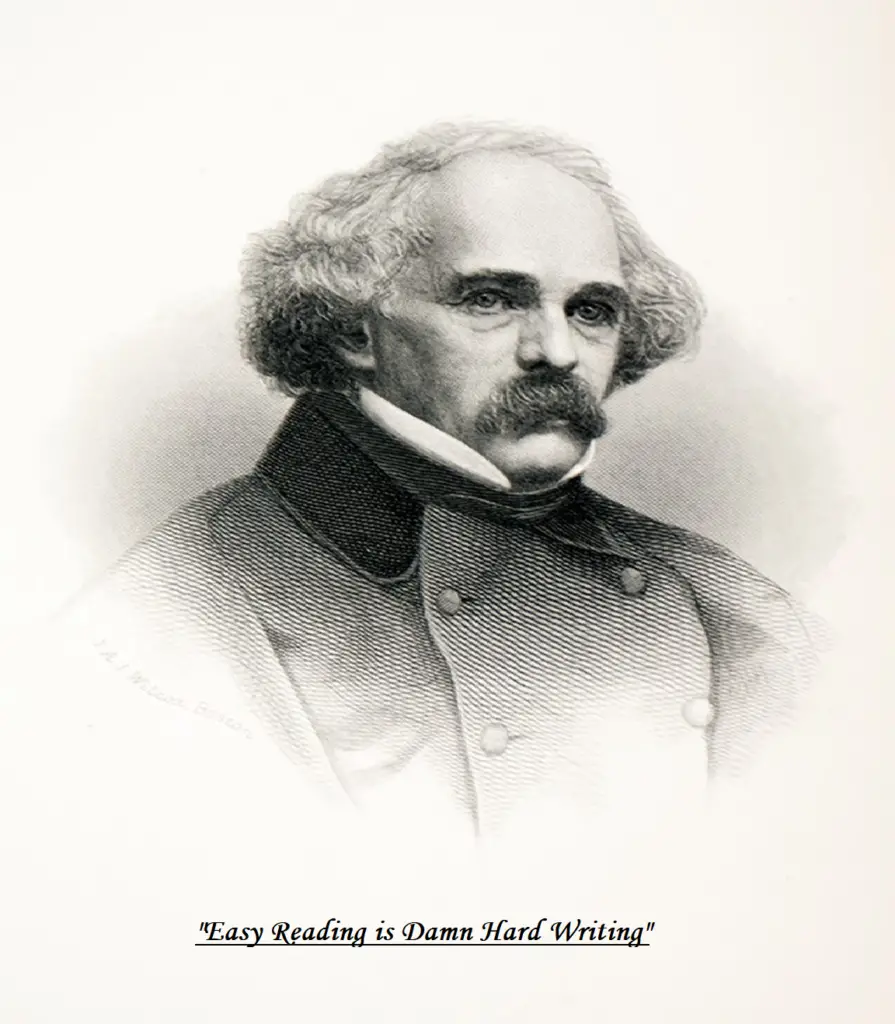Early life
Nathaniel Hawthorne was born on July 4th 1804 to a family in Salem associated with the Puritan discipline. His early ancestor William Hathorne was a magistrate involved in religious prosecution while another one of his ancestors John Hathorne who was also a judge was involved in Salem witch trials. Being ashamed of his lineage, he added “w” to his surname so as to disassociate himself with his scandalous family. But later on, his puritan lineage became his inspiration for his writings.
His father who was a sea captain died of yellow fever while still at sea leaving his wife and kids behind helpless. Not having any financial aid Nathaniel and his family moved with his mother’s influential brothers. The sudden demise of his father made his mother very protective of him which eventually ended up with him being isolated from the other kids. He was not unhappy though being the only son that his family had apart from his two sisters.
Suffering from a leg injury forced him to become immobile which proved as an advantage for him as he developed an exceptional taste for reading and writing during this period. He went to Bowdoin College with financial help from his maternal uncles. He became friends with Henry Wadsworth Longfellow and future U.S. president Franklin Pierce during his time in Bowdoin College.

Short Stories
After College he came back to his maternal household and self isolated himself for 12 years during which he wrote various short stories such as “My Kinsman-Major Molineux”, “Roger Malvin’s Burial” and “ Young Goodman Brown” which are one of the finest of their own kind. His works sure brought him some fame but did not support him financially because of which he started working at the Boston Custom House. His stories were later compiled by Horatio Bridge in one volume called “Twice Told Tales” in 1837.
Hawthorne ended his seclusion when he met his neighbour Sophia Peabody who was a painter and transcendentalist. After a long period of courtship he finally married her in 1842 and they lived in the Old Manse in Concord where he was surrounded by transcendentalists. He did welcome their companionship but did not follow their ideology after all. During his time in Concord he wrote most of his stories for his short story collection “ Mooses from an Old Manse”.
His Books
As his family grew he was covered into debts which forced him to move to his birthplace Salem where with the help of his political connections he landed a job at the Salem Custom House which he lost after two years because of the change in the government which eventually turned out as a blessing in disguise as he finally got time to write his masterpiece, “The Scarlet Letter” which got him the fame he deserved.
Nathaniel left Salem and moved to the Red House in Lenox, Massacheuts where he met Herman Melville who was very inspired by Nathaniel and dedicated his works to him, the most famous of them being his novel “Moby Dick”. His stay in Lenox was the most productive time of his writing career when he produced “The House of Seven Gambles”, “The Blithedale Romance”, “A Wonderbook” and “Tanglewood Tales”.
In 1852 elections Nathaniel helped his friend Pierce by writing a campaign biography for him which later resulted into him getting elected as President. Pierce awarded him by appointing him as American Consul at Liverpool(England). He served this position for about four years during which he produced “Our Old Home”.
Nathaniel took his family on a long vacation to Italy and then back to England where he finished his last and longest novel “The Marble Faun”.
Death- “Death should take me while I am in the mood”
After finally moving back to The Wayside in Concord Nathaniel tried to work on many ideas but could not progress beyond a certain point. His unfinished drafts show signs of psychic regression. Although he was a particularly active man his health began to deteriorate over the years. He went on a trip with his friend Pierce in search for his health to the New Hampshire Hills where he died on his second night there.
Legacy
“Words – so innocent and powerless as they are, as standing in a dictionary, how potent for good and evil they become in the hands of one who knows how to combine them.”
Nathaniel for as sure knew the art of combining words as he was a skillful craftsman. This can be seen in any of his works which had a very tight construction, majorly his short stories. Hawthorne was the master of a classic literary style which is remarkable for its clarity and directness.
Hawthorne’s legacy comes from his lineage as the readers can clearly see the influence of his family has not only led into him being a dark romanticism writer but also in his writing which is heavily weighted by his family’s Puritan background and is set up in the backdrop of the New England of his own time. His works if interpreted in a different way can be seen as a criticising the American Society for its too moralistic beliefs. His Books like “The Scarlet Letter”, “Twice Told Tales”, “ The House of Seven Gambles” are adopted into movies by American Directors which were received quite well by the people.
Dark Romanticism, Allegory, Inherent Evil, Moralism, Symbolism and psychological complexity of human minds are the themes that Hawthorne explored in his writings and which he became a master of, and for that he will always be remembered for.
“Every individual has a place to fill in the world and is important in some respect, whether he chooses to be so or not.”